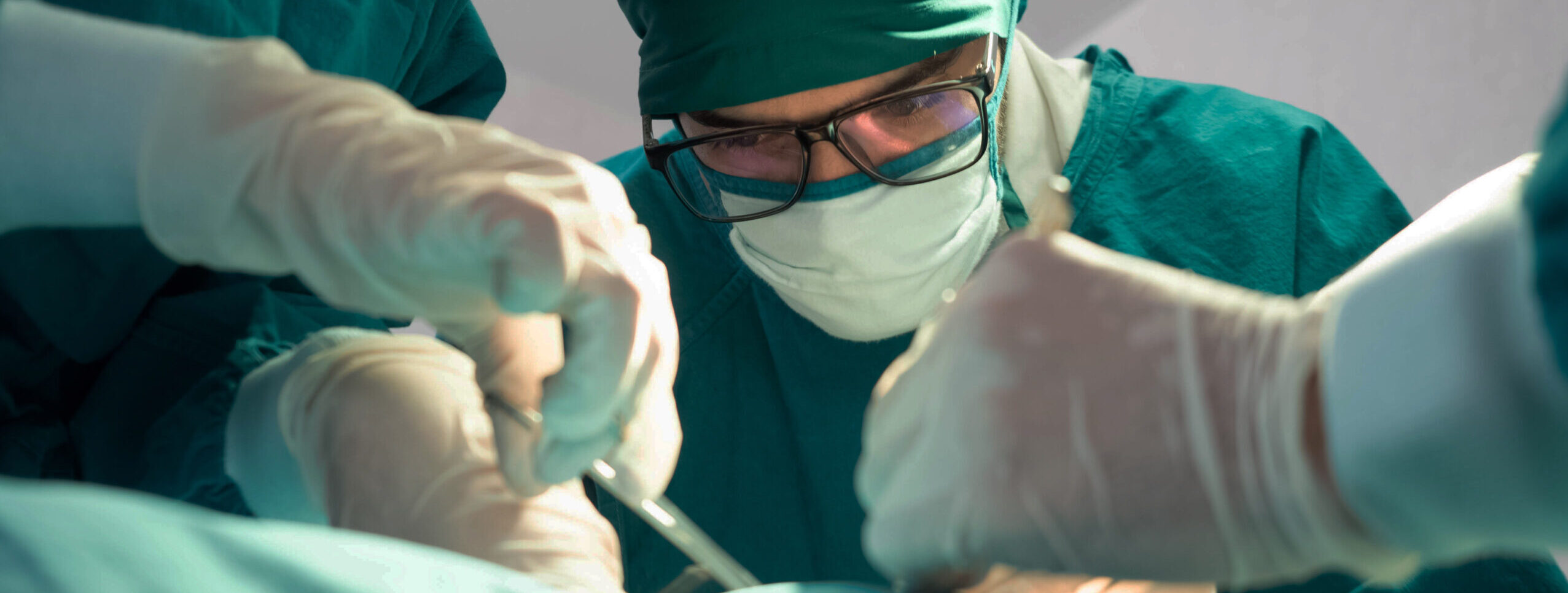Key points of fertility surgery, including laparoscopy & hysteroscopy
- Laparoscopy and hysteroscopy are two common forms of fertility surgery used to correct structural problems causing female infertility.
- An estimated 20% to 40% of infertile couples have conditions affecting fertility that can be surgically corrected.
- Laparoscopy and hysteroscopy are minimally invasive procedures allowing fertility surgeons to both diagnose and treat female pelvic conditions, such as fallopian tube blockages, endometriosis, uterine fibroids, polycystic ovary syndrome (PCOS) and structural abnormalities.
- Fertility surgery can also correct conditions causing infertility in men, including removing varicoceles and retrieving sperm blocked from being ejaculated.
- Surgery to correct infertility-causing conditions is the specialty of Ember’s Dr. William Freije.

At Ember, everyone is a VIP – very important patient
And we have a thing for the small things: Each Ember patient gets a dedicated fertility coordinator, a patient’s personal care guide through every clinic detail, from the very first phone call to meeting your little miracle. Schedule your appointment today using our online self-scheduling tool.
What are fertility surgeries like laparoscopy & hysteroscopy?
Fertility surgery is an operation to correct conditions that cause female infertility and male infertility. These conditions can be congenital, meaning a person is born with them, or they may result from a medical condition affecting the reproductive system.
The American Society for Reproductive Medicine (ASRM) estimates that anywhere from 20% to 40% of couples with infertility have female pelvic factors or male infertility factors that fertility surgery can correct. The most common types of fertility surgery are laparoscopy and hysteroscopy, which both address conditions causing infertility in women. We generally use these procedures for diagnosis when other imaging tests have not revealed the cause of infertility.
Whenever possible, Ember’s surgeon performs minimally invasive surgery procedures, though sometimes the patient’s condition requires traditional open surgery such as laparotomy.
Benefits of minimally invasive surgery for infertility
Laparoscopy and hysteroscopy for women and vasectomy reversal (vasovasostomy) for men are minimally invasive procedures. These involve the use of a small camera inserted into the patient to provide the surgeon a clear view of the operative area shown on a video monitor.
Minimally invasive surgeries and procedures cause less trauma to tissue compared with traditional operations. This results in less blood loss, pain and scarring, while improving outcomes and reducing recovery time.
Laparoscopy
Our surgeon uses laparoscopy to definitively diagnose conditions causing female infertility. Where possible, the surgeon can also correct the problem during the same procedure, which is called operative laparoscopy.
During laparoscopy, a small camera and light on a fiber optic tube called a laparoscope are inserted into the abdomen through small incisions in the navel. This provides a good view of the internal area, which is shown on an external computer monitor. Our surgeon, Dr. Freije, can then correct the identified problem, such as fallopian tube blockages, using special instruments.
Laparoscopy usually takes only about half-an-hour to an hour-and-a-half. Depending on the patient’s condition and preferences, we perform this procedure with the patient under local or general anesthesia.
Absorbable stiches close the small incisions. Laparoscopy patients go home after the procedure and have a short recovery time. They are usually able to return to work and most activities the next day.

We have a thing for the small things
- We get to know every patient and their individual stories.
- Ember’s staff members provide a hands-on, guided journey, not an assembly line experience.
- We believe everyone has the right to have a baby: couples, individuals, LGBTQ+ people, and those with difficult cases or of advanced age.
Hysteroscopy
Similar to laparoscopy, hysteroscopy uses a lighted camera on a fiber optic tube, which is a hysteroscope. The surgeon does not use incisions, but inserts the hysteroscope through the vagina and cervix and into the uterus in order to inspect it and the fallopian tubes.
Hysteroscopy is often used to examine the uterine structure for abnormalities, such as a septate uterus (divided), that cause infertility. Dr. Freije also performs it to identify other conditions that can develop, such as uterine fibroids and adhesions.
As with laparoscopy, hysteroscopy can also become operative to correct an identified problem. A diagnostic hysteroscopy is done without anesthesia, but if it turns out to involve corrective surgery, general anesthesia is used.
Following are primary causes of female infertility we treat with fertility surgery.
Fallopian tube blockage
Blocked fallopian tubes are a common cause of infertility. Because sperm fertilizes the female egg when it is in the fallopian tube, blockages can prevent the sperm from reaching the egg. A blockage can also prevent the fertilized egg from traveling to the uterus to implant for pregnancy.
The type of surgery we use to correct this condition depends on the severity of the blockage and its location in the fallopian tube. Part of the blocked tube can be removed and then reconnected in a tubal reanastomosis.
This can also reverse a tubal ligation (having one’s “tubes tied” as a form of sterilization). Other procedures can be used to rebuild parts of the tube or create openings in the blockage.
Endometriosis
Endometriosis occurs when tissue from the endometrium (uterus lining) grows outside the uterus, often on the ovaries and the tissue that lines pelvic organs. There are several ways in which endometriosis can cause infertility, such as scar tissue and adhesions caused by the misplaced endometrial tissue that affect reproductive system functioning.
ASRM estimates that 30% to 50% of women with endometriosis can experience infertility. Laparoscopy is the only way to accurately diagnose endometriosis. Dr. Freije can perform corrective procedures during laparoscopy to enable the woman to conceive.
Uterine fibroids & uterine polyps
Uterine fibroids can cause infertility by making it difficult for the embryo to implant properly in the uterine lining for pregnancy. These fibroids are benign growths that can cause other symptoms, which can be painful. Myomectomy is a standard fertility surgery to remove uterine fibroids. It is done via laparoscopy or hysteroscopy on smaller fibroids. Larger ones can require open surgery. Other procedures may shrink and kill fibroids.
Uterine polyps are excess cells growing in the wall of the uterus that cause infertility by preventing embryo implantation. Uterine polyps can also cause miscarriage. These are removed in hysteroscopy.
Polycystic ovary syndrome (PCOS)
Polycystic ovary syndrome (PCOS) is caused by a hormonal imbalance that can affect ovulation and a woman’s fertility. PCOS can create ovaries with a thick covering layer that results in the production of too much testosterone.
A surgery called ovarian drilling breaks this thin layer to lower the amount of testosterone, which leads to regular ovulation and fertility. Ovarian drilling is accomplished through laparoscopy.
Surgery to treat other causes of infertility in women
Dr. Freije also performs surgery to treat other causes of female infertility or impede pregnancy. Other conditions that can hinder or prevent conception include:
- Structural uterine abnormalities.
- Ovarian cysts.
- Pelvic adhesions.
- Abnormalities of the ovaries.
Dr. Freije can often correct these with surgery and restore reproductive function.
Male infertility surgery
Surgery to correct male infertility issues is not performed as often as surgery for female infertility. When needed in certain circumstances, it is very effective. Following are primary surgeries we perform for male infertility conditions.
Varicocele and varicocelectomy
A varicocelectomy is outpatient surgery to correct a varicocele, which is an enlarged vein in the scrotum similar to a varicose vein. Varicoceles swell the veins resulting in warming of the testicles, which can affect sperm function and production. Varicocelectomy helps reduce the swelling, returning sperm movement and improved function.
TESA and other surgeries for azoospermia
Azoospermia is the lack of sperm in the semen due to a blockage. We use surgical extraction of the sperm to be used with in vitro fertilization (IVF) when other treatments are not effective.
The primary means of extracting sperm is testicular sperm aspiration (TESA) or other similar procedures, depending on the cause of the sperm blockage. In TESA, which is an outpatient procedure using local anesthesia, Lab Director Dr. Avisa Asemi, who is very experienced in TESA, inserts a needle into the scrotum and extracts sperm tissue.
TURED (transurethral resection of the ejaculatory duct)
Men who have a blockage of the ejaculatory duct (about 5% of infertile men) do not release sperm during ejaculation. TURED is the surgical procedure that involves a small incision in the duct to allow sperm to be ejaculated during intercourse for a pregnancy.




